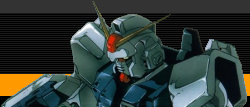|
|
Model Supplies
|
Here are the tools that I most commonly use when working on models. Although there are a lot of
other tools around, I will provide information on the ones that I use most frequently.
|
Plastic Cement
 |
|
Used for gluing plastic kits. There are two types of cements. One
uses thick glue (left side of photo) and the other uses thin glue (right side of photo). |
|
Crazy Glue & Accelerator
 |
|
Crazy Glue (left bottle): It's useful for many applications. Gluing small pieces of resin and
filling pin holes are its primary functions. Zap-A-Cap is probably one of the better ones to purchase. The one
in green packaging uses thicker glue than the one in pink packaging. Both of them have their usefulness.
Accelerator for Crazy Glue (right bottle): Speeds the curing/drying time of crazy glue. It's
as important as crazy glue, so you better get one if you are planning to use crazy glue.
|
|
Crazy Glue Gel
 |
|
It's a different type of crazy glue possesing gel-like qualities. It's
very useful for gluing some types of resin pieces since the glue will not run or flow around like regular crazy glue,
but it's also not as strong as regular liquid crazy glue. |
|
Epoxy Glue
 |
|
This should only be used for resin kits (I don't think plastic
kits will need it). It's a lot stronger than crazy glue and has some flexibility. For any heavier resin pieces this would
be the glue to use. |
|
Tamiya Putty
 |
|
It's a very good filler for small pin holes for resin kit or seam lines
for plastic kits. It requires mixing with Mr. Color thinner in order to stick onto the surface securely. |
|
Tamiya Rubbing Compound
 |
|
A special tubed paste used to polish aircraft canopies and other
pieces that need a very smooth finish. It's also very useful for removing mistakes made while using Gundam markers. |
|
Tamiya Primer (Gray)
 |
|
It's a supply that is needed for all resin kits. If you are planning
to use acrylic paint for plastic kits then you will also need to use primer. I used both Tamiya primer and
Mr. Surfacer 1000, but I find all Gunze Sangyo's primer too fine/glossy, so it's not very good for acrylic
paint, so most of time I use Tamiya primer. I use "gray" colour primer because it seems to stick better than the
white primer. Also the gray colour helps to find pin holes and imperfection areas (like sanding marks and stuff
like that). |
|
Mr. Resin Primer
 |
|
A special formulation of primer used in priming resin kits. It
comes in a bottle or spray can. I use the bottle version so I can use my air-brush for priming very small pieces. |
|
Mr. Metal Primer
 |
|
A primer used for priming metal pieces. |
|
Gunze Sangyo Mr. Color

 |
|
This is the brand of paint that I use the most. It's
the best paint for plastic kits (air-brush only). It dries very fast, but stinks like hell. It's lacquer based, so
you need to wear a mask for safety when using it, as well as adequate air flow and ventilation. Mr. Color's
paint are very thin, so it does not cover its base colour very well, especially the colour white. Mr. Base
white is the only white colour that would cover the base quickly (it's a thick paint compared to all the other
Mr. Color paints). So it's good to use for painting the flesh tones of a resin figure (further explanations in
the painting section). |
|
Tamiya Acrylic
 |
|
Paint for beginners, but not quite as good as
Mr. Color. It takes too long to dry and it's not as strong as Mr. Color. It's also not the best choice
for working on Gundam plastic kits, but it's better than other types of acrylic paints. |
|
Tamiya Enemal
 |
|
Tamiya's non-acrylic paints that are packed in very
small bottles. It uses a different thinner than the regular Tamiya paints. You can use them to paint on top of
Mr. Color or Tamiya acrylic paints. Most Japanese Hobby magazines use this paint for lining
Gundam kits or drawing eyes for anime figures. |
|
Retarder
 |
|
Acrylic, enemal, and lacquer paints use different
retarder, so you will need to get the right retarder for the paint that you want to use. Mixing retarder with the paint
will cause the paint to dry more slowly. For air-brushing, the paint will also look more glossy. For hand painting,
it will make brush strokes less noticeable. It's a very important tool for hand painting with Mr. Color.
Otherwise use Mr. Leveling thinner to do the same trick. (Mr. Leveling thinner is basically
Mr. Color thinner mixed with Mr. Retarder mild). |
|
|



